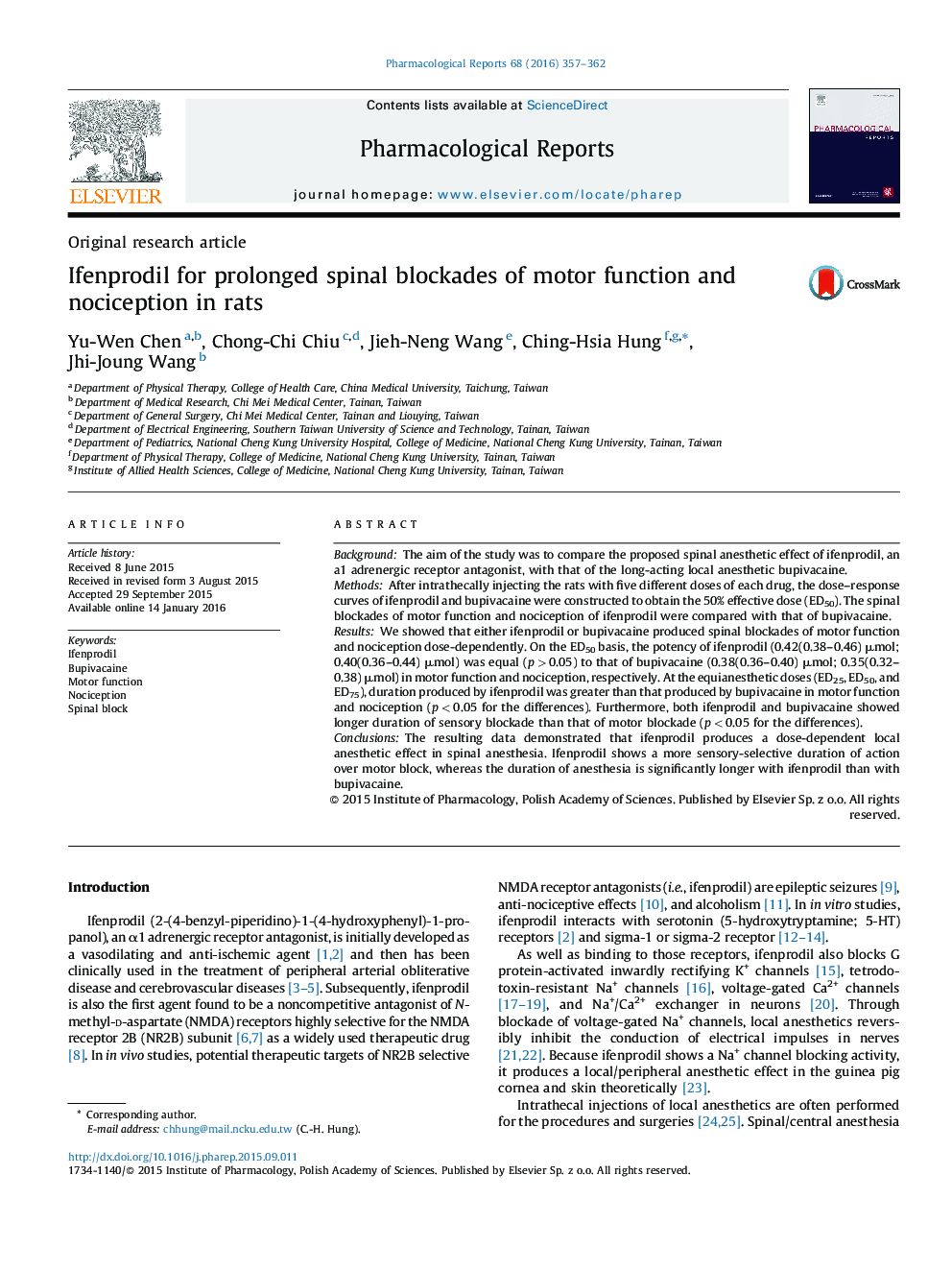| Article ID | Journal | Published Year | Pages | File Type |
|---|---|---|---|---|
| 2011643 | Pharmacological Reports | 2016 | 6 Pages |
BackgroundThe aim of the study was to compare the proposed spinal anesthetic effect of ifenprodil, an a1 adrenergic receptor antagonist, with that of the long-acting local anesthetic bupivacaine.MethodsAfter intrathecally injecting the rats with five different doses of each drug, the dose–response curves of ifenprodil and bupivacaine were constructed to obtain the 50% effective dose (ED50). The spinal blockades of motor function and nociception of ifenprodil were compared with that of bupivacaine.ResultsWe showed that either ifenprodil or bupivacaine produced spinal blockades of motor function and nociception dose-dependently. On the ED50 basis, the potency of ifenprodil (0.42(0.38–0.46) μmol; 0.40(0.36–0.44) μmol) was equal (p > 0.05) to that of bupivacaine (0.38(0.36–0.40) μmol; 0.35(0.32–0.38) μmol) in motor function and nociception, respectively. At the equianesthetic doses (ED25, ED50, and ED75), duration produced by ifenprodil was greater than that produced by bupivacaine in motor function and nociception (p < 0.05 for the differences). Furthermore, both ifenprodil and bupivacaine showed longer duration of sensory blockade than that of motor blockade (p < 0.05 for the differences).ConclusionsThe resulting data demonstrated that ifenprodil produces a dose-dependent local anesthetic effect in spinal anesthesia. Ifenprodil shows a more sensory-selective duration of action over motor block, whereas the duration of anesthesia is significantly longer with ifenprodil than with bupivacaine.
